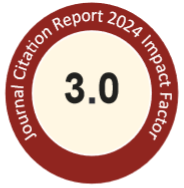Abstract
A traditional Chinese medicine, which was brought by a consumer for treating heart disease and uricosuria, was obtained and tested the illegal adulteration with chemical drugs. In the qualitative analysis, two-dimensional TLC, with chloroform:ethanol (9:1,v/v) and ethyl acetate: methanol: ammonia water (8:1:1,v/v) as the solvent systems, established the presence of caffeine, indomethacin, ethoxybenzamide, chlorzoxazone and diazepam in the pills. For quantitative analysis, a reversed-phase HPLC method was established for simultaneous determination of the five chemical drugs. The analysis of the sample extract was performed on a Cosmosil 5C 18-AR column (4.6x150mm) by a linear gradient elution with the mobile phase of 0.05 M KH 2 PO 4-0.1% formic acid buffer and methanol, programmed from 60:40, v/v, to 40:60, v/v, for 30 min, with 30 mim hold and then 60:40, v/v, for the subsequent 15 min, at a flow rate of 0.7 ml/min and with propylparaben as an internal standard. The monitor wavelength was set at 230 nm. System suitability tests showed that the established method was quite suitable for the determination of the adulterants in the pills. By using this method, 30.8mg of caffeine, 71.4 mg of ethoxybenzamide, 35.7 mg of chlorzoxazone, 0.6 mg of diazepam and 9.3 mg of indomethacin, were found in each pill of the sample.
Recommended Citation
Tsene, M.-C.; Tsai, M.-J.; and Wen, K.-C.
(1997)
"Quantitative analysis of caffeine, ethoxybenzamide, chlorzoxazone, diazepam and indomethacine illegally adulterated in Chinese medical pills,"
Journal of Food and Drug Analysis: Vol. 5
:
Iss.
1
, Article 3.
Available at: https://doi.org/10.38212/2224-6614.2954

